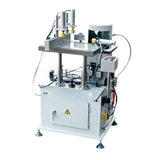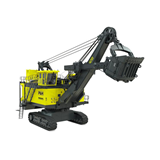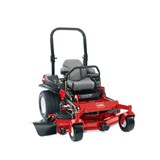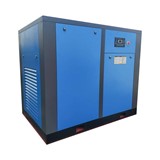As investigations into the Soma mine disaster continue, the prevailing opinion is that the regulations governing mining in Turkey, and the government-run safety inspections intended to enforce them, were wholly unsatisfactory.
Three weeks later 22 coal mine workers lost their lives in China's south western municipality of Chongqing, following what local authorities described as a "gas incident".
Mercifully nothing on such a catastrophic scale as Soma has ever happened in Australia, or at least not since 1902 when an explosion at the Mt Kembla colliery killed 96 men and boys, some as young as 14.
However, mining is an inherently dangerous business, and accidents do and will happen. Last year 10 people were killed in mining operations in Australia. To date in 2014, eight have died with barely 6 months of the year elapsed. It is unfortunately a statistical certainty that they won't be the last.
Andrew Vickers, Mining and Energy General Secretary of the Construction, Forestry, Mining & Energy Union (CFMEU) said the tragedy in Turkey was indicative of a government's failure to step in and hold the industry to account, and reflected a wider global problem from which Australia was not immune.
"This horrifying accident is the ghastly result of sloppy safety practices…but unfortunately, inadequate safety regulation in mining is not just a problem in Turkey," Vickers said.
He said while Australia's mining safety standards were recognised as amongst the best in the world, Australia's failure to ratify an international agreement on mine safety – ILO Convention 176 – was unacceptable, particularly when the likes of the USA, Germany and South Africa were all signatories.
"It's a significant convention that prioritises supervision, inspection and reporting," Vickers said.
"But it's a bad look when wealthy countries like Australia disregard these agreements as it devalues them in the eyes of the international community."
Language barrier
The CFMEU also took aim at a recent proposal by the Australian Industry Group (AiG) to significantly reduce English language requirements in the visa category, branding it dangerous and irresponsible.
National Secretary Michael O'Connor said watering down English language requirements for 457 Visa holders would greatly increase the chance of serious injuries or fatalities in the mining sector.
He said Immigration Department data showed 457 Visa worker deaths in the workplace were higher before English language requirements were strengthened.
"The fact is that the current 457 English language standards save lives," O'Connor said.
"Only one work-related death of a 457 worker has been recorded since the former government introduced the current 457 minimum English language standards in September 2009.
"When 457 Visa workers are in dangerous workplaces like mines…and don't have sufficient English language skills it greatly increases the risk of a serious accident occurring to them or their co-workers."
Contractors at risk
Queensland's former Commissioner for Mine Safety & Health, Stewart Bell, is another voice in the growing chorus of concern over Australia's mine safety record in the past year.
Bell said the industry had recently seen a disturbing increase in mining deaths, noting in particular that mine contractors were disproportionally represented in the statistics.
"We simply cannot afford to ignore the current number of fatalities at Australian mine sites. Each tragic report of a mine worker losing their life at work signals a definite warning about mine safety management and its failure to effectively address hazards and manage risk," Bell said.
"The majority of these mineworkers were contractors. Even though Queensland is not represented in these recent statistics contractors are vastly over-represented in Queensland mining fatal accidents.
"Families should be confident that when a loved one goes to work in the mining industry they will come home safely, regardless of whether they are contractors or mining company employees."
Bell said mine operators, site senior executives (SSEs) and mine management had to understand that the effective management of contractors and their employees is one of their key obligations.
"In Queensland, our mining acts require that a single mine site-specific safety and health management system (SHMS) is used for employees and contractors alike to ensure that risks are controlled and are at an acceptable level," Bell said.
"Running multiple SHMSs in parallel – mine and contractors – is unlikely to achieve a safe outcome and is contrary to legislative requirements.
"Mine management, in particular the SSE, is charged with managing safety on mine sites. This can only be achieved through the establishment and effective implementation of one SHMS that provides direct control over all facets of the operations."
Workforce expansion
However Western Australia's Department of Mines and Petroleum Resources (DMP) Safety Executive Director, Simon Ridge, said any analysis of mining fatalities had to take into account a rapid and significant increase in mining sector employees.
A new mines safety report released by DMP analysed trends in mining-related fatalities based on 52 fatal mining accidents which occurred in Western Australia from 2000 to 2012.
"In the 13-year period reviewed, the mining workforce rapidly increased from 40,000 people to 100,000," Ridge said.
"Despite this, the number of fatalities per year showed a downward trend from seven in 2000 to zero in 2012, when the state recorded its first fatality free year in over a century of recorded history.
"If we had a 100,000-strong workforce back in the 1950s, the average number of fatalities per year would have been around 200, so we have certainly come a long way."
The report found failing to identify workplace hazards, inexperienced staff, fatigue, the incorrect use of safety harnesses, as well as unrestrained equipment were the chief culprits.
Ridge said the findings reinforced the importance of a robust safety induction program, a positive safety culture, and the effective implementation of fatigue management plans.
"Our ultimate goal moving forward is to become a 'zero-harm' industry," Ridge said. To which end Australian mining still has a very long way to go.




-160x160-state_article-rel-cat.png)


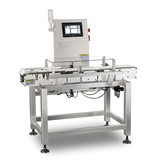




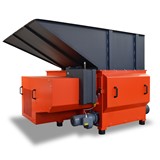



-160x160-state_article-rel-cat.png)
